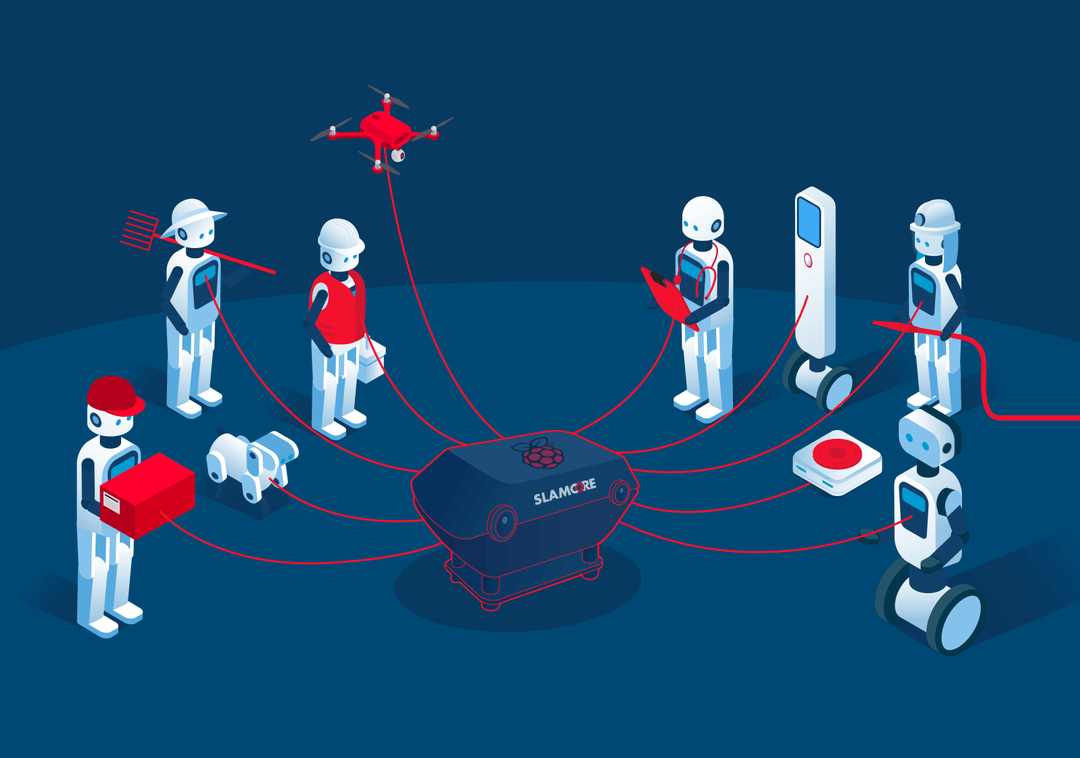
Using cameras to give robots the ability to simultaneously locate and map their position in a physical environment is a significant challenge. It requires complex algorithms and deep expertise. However, it should not need expensive, specialized hardware – which is why this month in Berlin we are demonstrating our latest SLAM solution running on the popular Raspberry Pi computer.
Initially conceived as a low-cost, programmable computer to inspire UK school children to get into computer science, over 25 million Raspberry Pi computers have been sold worldwide since 2011. Its success, which has spread beyond classrooms and hobbyist clubs to include many uses in the commercial world, lies in its low cost, low-power, connectivity and flexibility. At just £25, and built using standard components, Raspberry Pi provides an excellent test bed for a broad range of applications.
But can the Raspberry Pi handle the huge flows of data and the real-time processing needed for a complex robot to successfully locate itself and map the space around it? In most cases the answer is probably not. SLAM systems typically rely on many different sensors, all sending streams of data that must be analyzed and acted upon using complex algorithms. In most cases this requires high-power processors and custom-developed computers.
Until now…
SLAMcore is pleased to announce that at CES 2020 it will demonstrate a complete, Visual-Inertial (VI) SLAM solution running on a Raspberry Pi 4. This has been possible because of the unique algorithms developed by SLAMcore that tightly integrate a stereo pair of cameras with the input from a standard motion sensor. SLAMcore has honed these algorithms into a highly optimised, modular and efficient solution that can be run on low-power systems. Alternatively, it can be installed on more powerful hardware while leaving considerable free resources for other features.
The SLAMcore on Raspberry Pi demonstration is important in two ways. For the robotics industry to really take off and fulfil its potential more developers need to test and build more robots and bring them to market faster and at lower cost. The path towards this lies in creating an ecosystem of standardized solutions that can be integrated to solve common challenges such as SLAM. Using Raspberry Pi to create proof of concepts democratizes access to these solutions making it easier and cheaper for more players to enter the market.
Secondly, SLAM solutions must be easy to integrate and be very efficient in their use of limited power and computational resources. Ultimately, we expect customers to implement our solutions on their robots’ host CPU alongside the many other systems and processes needed to deliver a fully functional robot. The Raspberry Pi demonstration highlights our ability to use a small fraction of that overall resource to deliver SLAM.
Last month, Eben Upton, inventor of Raspberry Pi, was honoured for his contribution to computing. He has done as much as anyone to open the doors and encourage people to experiment, innovate and develop useful solutions with computers. We are proud to continue this tradition of British engineering entrepreneurship and hope to mimic his success in robotics. SLAMcore on Raspberry Pi not only provides a practical solution for any robot designer today, but we hope, will also encourage and inspire others to design the next generation of robots to help overcome global challenges.
